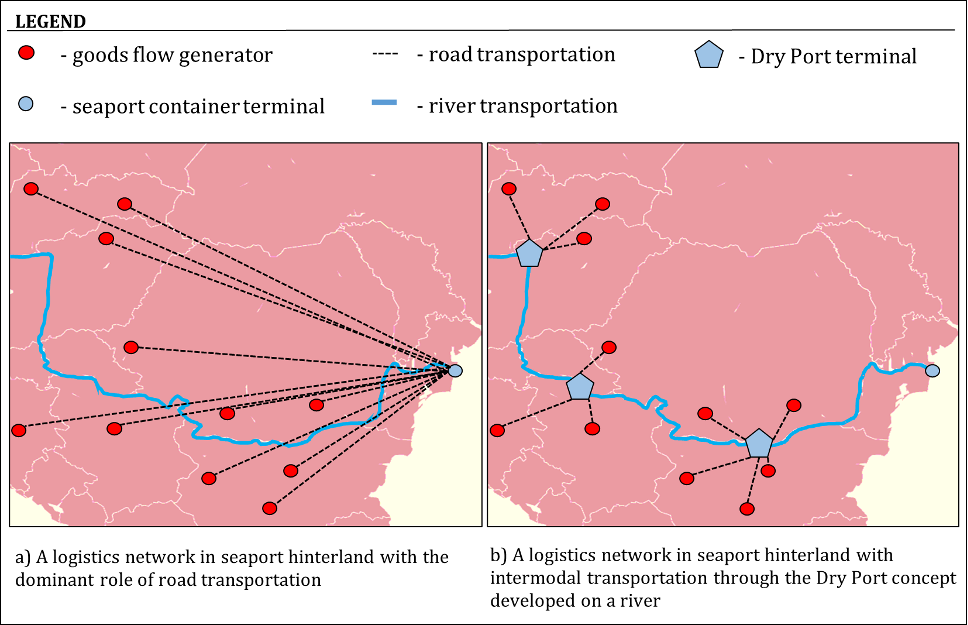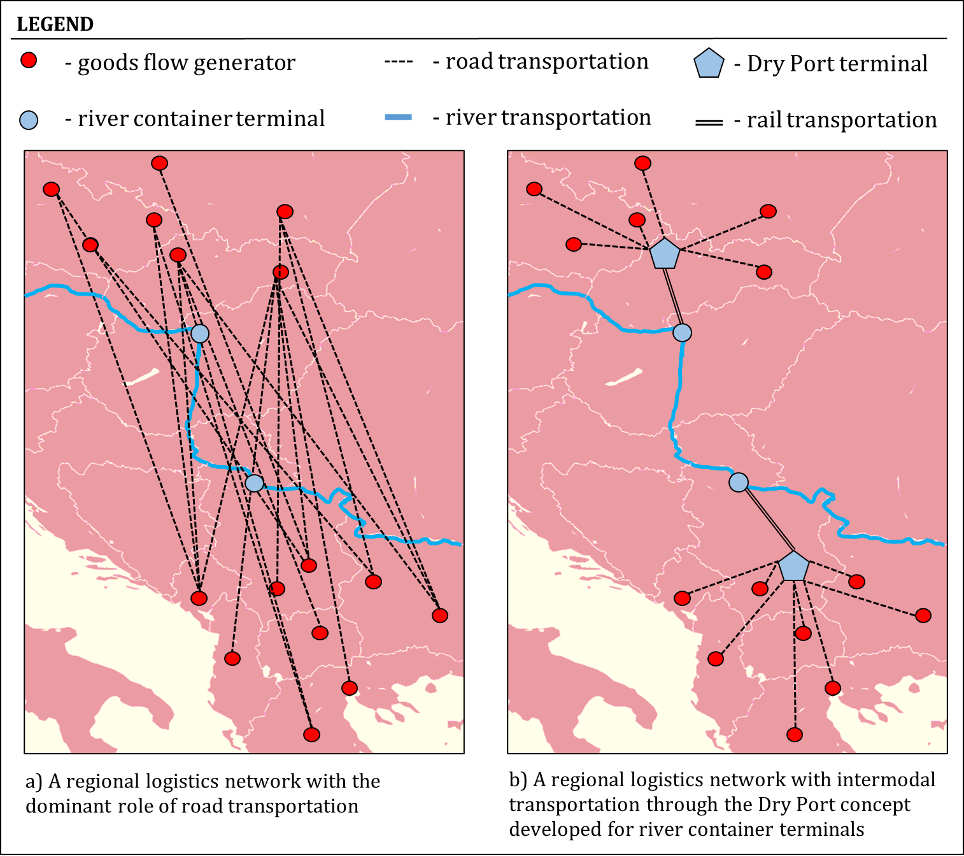In the age of globalization, maritime shipping is essential to enable both regional and intercontinental flows of goods.
Large container terminals in seaports play a central role in handling cargo between sea and land. They become sticking points in the supply chain. As the volume of intercontinental flows of goods is expected to double between 2017 and 2025, larger ships will be required, putting even more pressure on the existing sea terminal infrastructure.
Increasing operational inefficiencies in seaports are causing similar problems in the hinterland. Truckers struggle with traffic congestion, rising energy costs and growing environmental concerns. According to official Eurostat data, road transport accounted for 76.3% of European goods flows in 2019; Rail transport 17.6% and inland waterways only 6.1%.
The only way to mitigate the negative impact of logistics activities in seaport cities and inland is the development of intermodal transport. By shifting the transport of sea containers to rail instead of road, several heavy trucks can be replaced by a single freight train. The train is a more sustainable and cheaper alternative to road transport. (The same applies to inland navigation, although it is limited to regions with navigable rivers.)
The best approach to promoting intermodal transport in the hinterland is the dry port concept. It serves as an inland extension of the seaport, which is connected by rail (Fig. 1).
Illustration 1: Seaport hinterland network with a) the dominant role of road transport and b) dry ports.
A dry port improves the performance of seaport container terminals through better synchronization between seaports and the hinterland. It ensures the necessary capacity of the seaports, expands the range of services offered by the seaports and enables larger container volumes to be handled. Dry ports currently in operation include facilities in Sweden, the US, Australia and India. Dry ports can also connect seaports with river transport (Figure 2) and terminals (Figure 3).
 figure 2: Seaport hinterland network with a) the dominant role of road transport and b) dry ports connecting river transport with the seaport.
figure 2: Seaport hinterland network with a) the dominant role of road transport and b) dry ports connecting river transport with the seaport.

figure 3 Regional logistics network with a) the dominant role of road transport and b) dry ports developed for river container terminals.
Dry port systems allow for the consolidation of flows of goods in both the early and late stages of supply chains and result in better modal shift through reduced reliance on road transport. Consequently, the concept eliminates unnecessary road traffic in seaport cities. Regional logistics networks are becoming more efficient and sustainable and can attract larger flows of goods. In addition, regions with competitive logistics experience stronger economic development.
It is more efficient for a seaport to consolidate flows of goods than to take care of individual trucks. Better synchronization means improved resource utilization and faster movement through the supply chain.
Dry ports are a starting point for the further development of intermodal transport. But making them a reality will require international collaboration between scientists, logistics experts, and local and regional governments.
Milovan Kovač is a data analyst at the Institute for Scientific Informationand Gali Halevi is director of research analysis, with Clear up.





